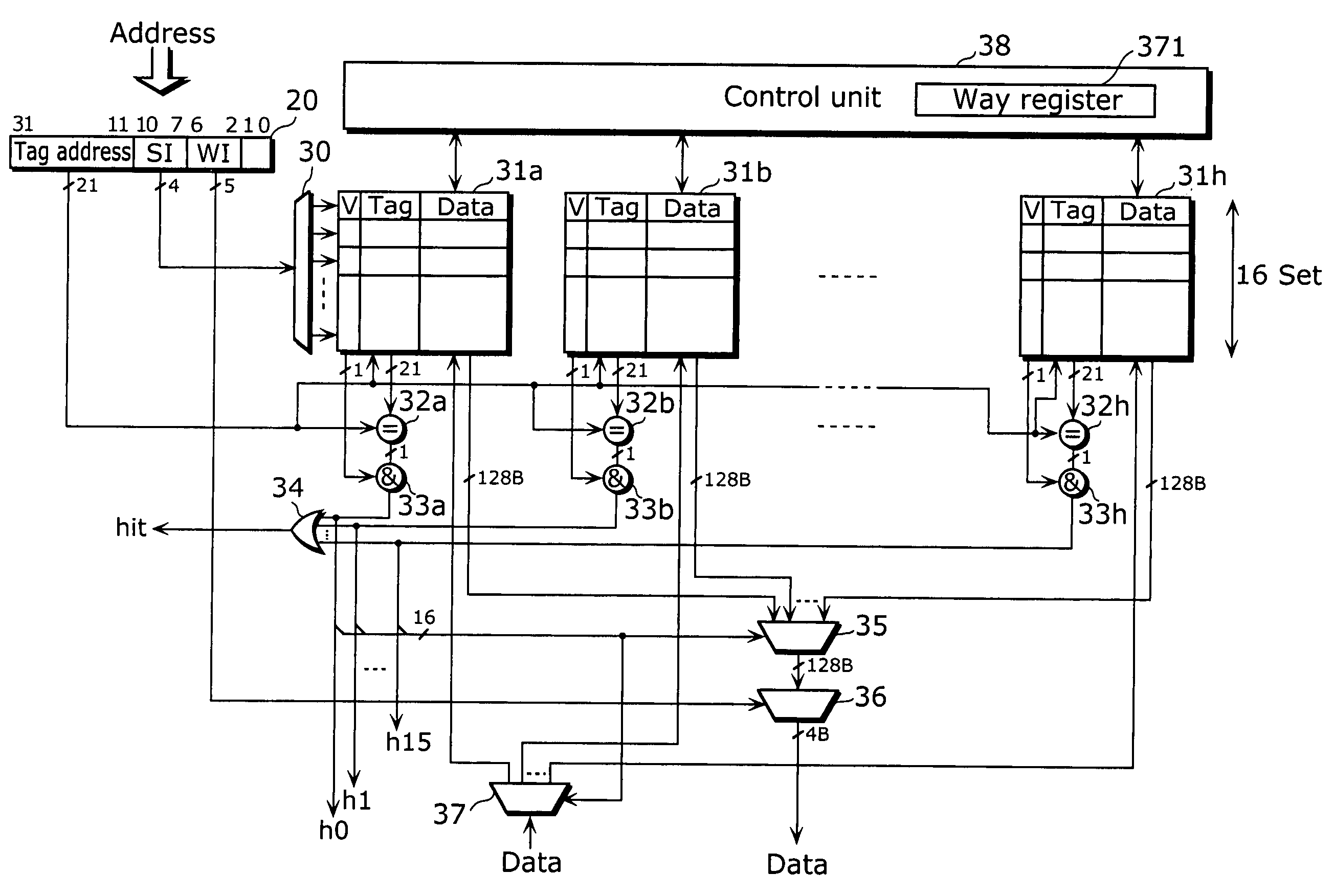N-way set associative cache memory and control method thereof
a cache memory and control method technology, applied in the field of cache memory, can solve the problems of inability to secure the necessary processing time, influence the hit ratio of the cache memory, and cache misses when the task a is executed, so as to achieve the effect of easy securement of the real processing time required by the task
- Summary
- Abstract
- Description
- Claims
- Application Information
AI Technical Summary
Benefits of technology
Problems solved by technology
Method used
Image
Examples
first embodiment
[0064]FIG. 1 is a block diagram showing an outline structure of a system including a processor 1, a cache memory 3, and a memory 2 in the first embodiment of the present invention. In the diagram, the cache memory 3 is included in a system having the processor 1 and the memory 2. The processor 1 is a processor which carries out multi-task control, and which switches and executes tasks 1 to 4 and so on, which are found within the memory 2. The cache memory 3 is an N-way set-associative cache memory which places in a correspondence, one or more ways among N ways, for each of the task, and activates a corresponding way during the execution of a respective task. For the respective tasks, all functions of the cache memory can be used with respect to an active way. Furthermore, for the respective tasks, the functions from among all the functions of the cache memory that can be used is restricted, with respect to a way that is not active (referred to as an inactive way). In the present emb...
second embodiment
[0101]Although, in the first embodiment, the way register 371 is described as being rewritten due to task switching, the present embodiment describes a structure in which a task is identified in the cash memory, and the way register 371 is rewritten depending on the result of the identification. In addition, although in the first embodiment, the commonly known LRU scheme is adopted as the replacement algorithm, the present embodiment describes a structure which carries out a pseudo-LRU scheme using a 1-bit flag in place of the data indicating the access order.
[0102]FIG. 8 is a block diagram showing the structure of the cache memory in the second embodiment of the present invention. The cache memory in the diagram is different, compared to the structure in FIG. 2, in including ways 131a to 131d in place of the ways 31a to 31d, and including a control unit 138 in place of the control unit 38. Hereinafter, description shall be focused on the points of difference, while omitting the poi...
third embodiment
[0141]The first and second embodiments disclose a structure in which the unit of replacement in the cache entry is in line (128 byte) units. The present embodiment describes a structure in which the unit of replacement can be switched between a line unit and a sub-line (32 byte) unit, on a per task basis.
[0142]FIG. 14 is a block diagram showing the structure of the cache memory in the third embodiment of the present invention. The cache memory in the diagram is different, compared to the structure shown in FIG. 8, in including ways 231a to 231h in place of the ways 131a to 131h, the addition of selectors 233a to 233h, and including a control unit 238 in place of the control unit 138. Hereinafter, description shall be focused on the points of difference, while omitting points which are the same.
[0143]The ways 231a to 231h are different, compared to the ways 131a to 131h in FIG. 8, in that instead of holding 1 bit each for the valid flag and the dirty flag within a cache entry, these ...
PUM
 Login to View More
Login to View More Abstract
Description
Claims
Application Information
 Login to View More
Login to View More - R&D
- Intellectual Property
- Life Sciences
- Materials
- Tech Scout
- Unparalleled Data Quality
- Higher Quality Content
- 60% Fewer Hallucinations
Browse by: Latest US Patents, China's latest patents, Technical Efficacy Thesaurus, Application Domain, Technology Topic, Popular Technical Reports.
© 2025 PatSnap. All rights reserved.Legal|Privacy policy|Modern Slavery Act Transparency Statement|Sitemap|About US| Contact US: help@patsnap.com



